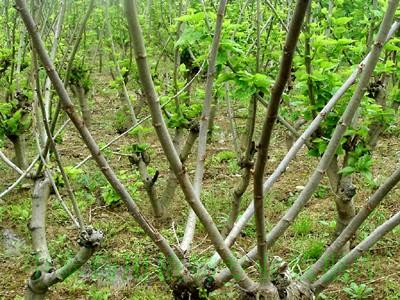| [English Name] | Mulberry Twig | |
| [Chinese Name] | 桑枝 | |
| [Pinying Name] | Sangzhi | |
| [Latin Name] | Mori Ramulus | |
| [Genera] | Moraceae | |
| [Efficacy] | qufengshiyao | |
| [Pictures] | Plant picture | Drug picture |

|
|
|
| [Alias] | ||
| [Source] | ||
| [Plant morphology] | ||
| [Distribution] | ||
| [Gathering and processing] | ||
| [Characteristics] | ||
| [Ecology] | It’s characteristic is Yang,strong adaptability、anti-pollution,anti-wind, salinity-alkalinity resistance.It grows in hills、hillside、village side、field and so on,mostly is artificial cultivation. | |
| [Chemical composition] | ||
| [Pharmacological activities] |
1. Hepatoprotection: Ethanol extract show hepatoprotection and mechanism of action may be through scavenging free radicals activity and inhibit glycosidases. Rutin show hepatoprotection on hepatic injury induced by thioacetamide through promote ribosomal RNA synthesis, adjust glutathione level, stable cells membrane and inhibit hepatic cells fabric. Oxyresveratrol and stilbene glycoside show similar activity through its antioxidant action[1]. 2. Anti-inflammatory and Analgesia: Stilbene glycoside still has anti-inflammatory and analgesia on acetic acid stretching, formalin paw lick experiment, capillary permeability and plantar swelling test in vivo[1,2]. |
|
| [Clinical trial] | Sangzhi(Ramulus mori) To improvethe percent conversion of lymphocyte: the low percent conversion of lymphocytepatients take 30g sangzhi decoction every day, continuation 1 mouth, it canimprove the percent conversion of lymphocyte significantly, from 37.7 ±4.3% to48.5± 6%, and continuation 2 months can be increased to 53.7± 6.4%. The tender sangzhi(Ramulus mori) is better, the sangbaipi (the root bark of white mulberry) isinvalid [1]. |
|
| [Properties] | ||
| [Medical and other Uses] | ||
| [Dosage] | ||
| [Cautions] | ||
| [Traditional usage] |
1. Bi pain due to wind damp, paralysis 2. Wind-damp arm pain 3. Cough due to prolonged upward flow of lung qi, profuse phlegm with quick breath, spitting pus with bloody discharge continuously 4. Watery retention, and beriberi |
|
| [Toxicological studies] | ||
| [Pharmaceutical preparations] | ||
| [References] |
Pharmacologic Actions: [1] Zhang Zuofa. [2] Chen Fujun, Lin Yixing, Xu Chunquan, et al. Journal of [1]Yan Huiqing, Chen Zhihui, Tao Boming, etc. Clinical observation on the efeectof Ramulus mori on transformation rate of lymphocyte. Journal of new medicine, 1978, (10):516 |
|